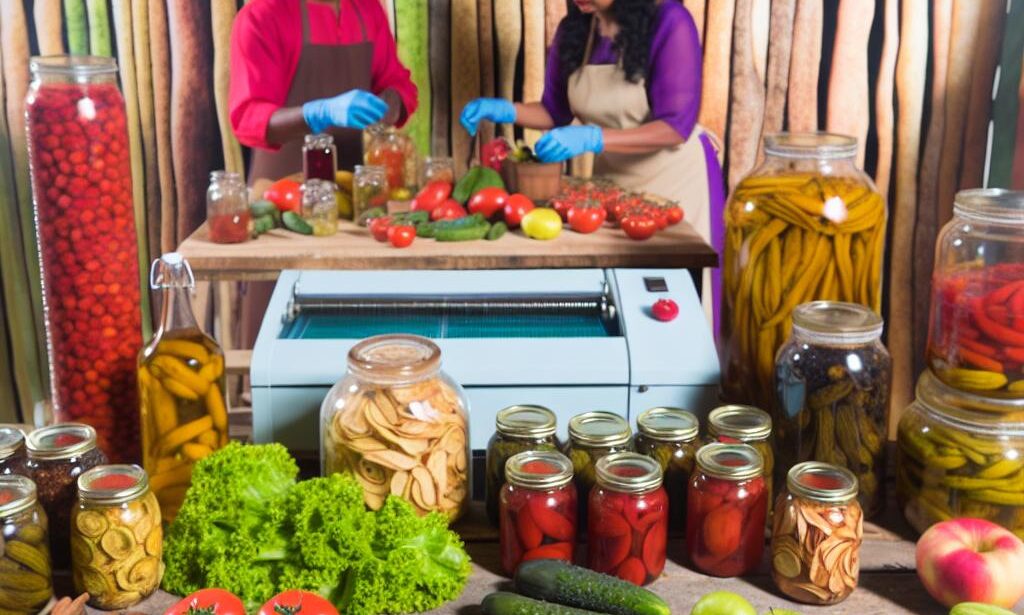Food preservation is a crucial skill that has been practiced for centuries, allowing people to extend the shelf life of perishable items and reduce food waste. Mastering the art of effective food preservation not only helps in saving money but also ensures a constant supply of nutritious and delicious food throughout the year. In this article, we will explore the various methods and techniques of food preservation, and provide valuable tips on how to preserve food effectively. Whether you are a seasoned homesteader or a beginner looking to reduce food waste, this article will equip you with the knowledge and skills to preserve food like a pro.
Table of Contents
- Introduction to Food Preservation Techniques
- Understanding the Science Behind Food Preservation
- Best Practices for Canning and Pickling
- Utilizing Freezing and Drying Methods for Long-Term Preservation
- Tips for Proper Storage and Shelf-Life Extension
- Q&A
- Concluding Remarks

Introduction to Food Preservation Techniques
Preserving food is an essential skill that has been practiced for centuries. It allows us to extend the shelf life of perishable items, reduce food waste, and ensure that we have access to nutritious meals year-round. In this post, we will explore various food preservation techniques that you can master to effectively preserve your favorite fruits, vegetables, meats, and more.
Whether you are a seasoned home cook or just starting to explore the world of food preservation, there are several methods that you can use to keep your food fresh and flavorful. From canning and pickling to freezing and drying, each technique offers unique benefits and can be tailored to suit your specific needs. By learning these methods, you can take control of your food supply, save money, and enjoy the taste of your favorite seasonal ingredients all year long.

Understanding the Science Behind Food Preservation
Preserving food is an age-old practice that has been crucial for human survival. is essential for mastering the art of effective food preservation. By learning about the various methods and the scientific principles behind them, you can ensure that your preserved foods are safe, flavorful, and long-lasting.
One of the key scientific principles behind food preservation is the inhibition of microbial growth. Microorganisms such as bacteria, yeast, and mold are responsible for food spoilage, so preventing their growth is essential for preserving food. This can be achieved through various methods, including:
- Canning: Heat processing to destroy microorganisms and enzymes
- Freezing: Lowering the temperature to slow down microbial growth
- Drying: Removing moisture to inhibit microbial activity
| Method | Principle |
| Canning | Heat processing to destroy microorganisms and enzymes |
| Freezing | Lowering the temperature to slow down microbial growth |
| Drying | Removing moisture to inhibit microbial activity |

Best Practices for Canning and Pickling
When it comes to canning and pickling, there are several best practices that can help ensure your food preservation efforts are effective and successful. By following these guidelines, you can master the art of food preservation and enjoy delicious, homemade canned and pickled goods for months to come.
First and foremost, it’s important to use high-quality, fresh produce for canning and pickling. This will ensure that your preserved foods have the best flavor and texture. Additionally, be sure to properly sterilize your canning jars and equipment to prevent contamination and spoilage. Another important best practice is to follow tested and approved recipes for canning and pickling to ensure the safety and quality of your preserved foods.
Furthermore, it’s crucial to properly seal and store your canned and pickled goods to maintain their freshness and flavor. Store your preserved foods in a cool, dark place, and be sure to label each jar with the date it was canned or pickled. By following these best practices, you can become a pro at canning and pickling and enjoy the fruits of your labor for months to come.

Utilizing Freezing and Drying Methods for Long-Term Preservation
When it comes to preserving food for the long-term, utilizing freezing and drying methods can be incredibly effective. These methods not only help to extend the shelf life of food but also help to retain their nutritional value and flavor. By mastering the art of effective food preservation, you can ensure that you always have access to fresh and delicious ingredients, no matter the season.
Freezing and drying are two of the most popular methods for long-term food preservation. Freezing food involves lowering the temperature of the food to below freezing, which helps to slow down the growth of bacteria and other microorganisms. On the other hand, drying food involves removing the moisture from the food, which also inhibits the growth of bacteria. Both methods have their own advantages and can be used for a wide variety of foods, from fruits and vegetables to meats and herbs.
| Freezing Method | Drying Method |
| Retains the texture and flavor of food | Requires minimal storage space |
| Best for preserving fruits and vegetables | Great for preserving herbs and meats |

Tips for Proper Storage and Shelf-Life Extension
Proper storage and shelf-life extension are essential skills for anyone looking to reduce food waste and save money. By mastering the art of effective food preservation, you can ensure that your groceries last longer and maintain their quality. Here are some tips to help you make the most out of your food storage:
- Use airtight containers: Storing food in airtight containers can help prevent spoilage and extend shelf life.
- Label and date items: Keeping track of when food items were stored can help you prioritize what to use first and avoid waste.
- Utilize proper temperature: Different foods require different storage temperatures, so be sure to store items in the appropriate environment to maintain freshness.
By following these tips, you can become more efficient in preserving your food and ultimately reduce your environmental impact.
Q&A
Q: What is food preservation?
A: Food preservation is the process of preventing food from spoiling or rotting, in order to extend its shelf life and maintain its quality and safety for consumption.
Q: Why is food preservation important?
A: Food preservation is important because it helps to reduce food waste, save money, and ensure a steady supply of food throughout the year. It also helps to maintain the nutritional value of food and prevent the spread of foodborne illnesses.
Q: What are some common methods of food preservation?
A: Common methods of food preservation include canning, freezing, drying, pickling, fermenting, and curing. Each method has its own advantages and is suitable for different types of food.
Q: How can I effectively preserve food at home?
A: To effectively preserve food at home, it is important to follow proper techniques and guidelines for each method of preservation. This includes using the right equipment, following recommended recipes, and storing the preserved food properly.
Q: What are some tips for mastering the art of effective food preservation?
A: Some tips for mastering the art of effective food preservation include practicing proper hygiene and sanitation, using high-quality ingredients, following tested recipes, and staying organized and attentive throughout the preservation process.
Q: Are there any safety considerations to keep in mind when preserving food?
A: Yes, safety is a crucial aspect of food preservation. It is important to follow recommended guidelines for processing, handling, and storing preserved food to prevent the growth of harmful bacteria and ensure the safety of the final product.
Concluding Remarks
In conclusion, mastering the art of effective food preservation is a valuable skill that can help reduce food waste, save money, and ensure a steady supply of nutritious food year-round. By understanding the principles of food preservation and utilizing various methods such as canning, freezing, and drying, individuals can extend the shelf life of their food and enjoy the benefits of fresh, flavorful ingredients long after they are harvested. With a little knowledge and practice, anyone can become proficient in the art of food preservation and reap the rewards of a well-stocked pantry. So, whether you are a seasoned homesteader or a beginner looking to reduce food waste, consider exploring the world of food preservation and discover the satisfaction of preserving your own food.

